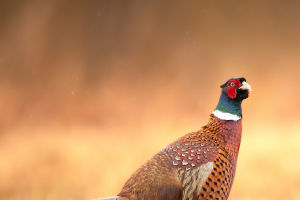The kingfisher, a symbol of natural elegance and vivid splendor, graces the world's waters with its stunning presence. With its vibrant plumage and remarkable hunting techniques, this avian marvel has captured the hearts of bird enthusiasts and nature lovers alike.
The Kingfisher family encompasses a diverse range of species distributed across the globe. These birds inhabit a variety of habitats, including freshwater lakes, rivers, coastal areas, and even mangroves. Each species has adapted to its environment, showcasing a range of sizes, colors, and hunting behaviors.
The kingfisher's most distinctive feature is its striking plumage. With hues ranging from vivid blues and brilliant greens to fiery oranges and deep rusts, these birds seem like living jewels. The iridescent colors, often more pronounced in males, help them blend into their surroundings and attract potential mates.
Kingfishers are agile hunters known for their exceptional fishing skills. Their keen eyesight enables them to spot prey from a distance, while their streamlined bodies and sharp beaks facilitate precise dives. They plunge into the water with remarkable speed and accuracy, emerging with fish clasped in their strong bills.
Kingfishers are not just skilled hunters but also skilled architects. They create nests along riverbanks by digging tunnels into the earth or utilizing natural cavities. These nests offer protection from predators and are often lined with regurgitated fish bones, creating a unique nursery for their chicks.
Each kingfisher species boasts its distinct calls, ranging from melodious chirps to sharp, piercing notes. These calls serve various purposes, including communication between mates, marking territory, and alerting others to potential threats.
Throughout history and across cultures, the kingfisher has held symbolic significance. In some societies, it's considered a good omen or a symbol of prosperity. Its vibrant colors and graceful presence have inspired myths, folklore, and even artistic representations.
Several kingfisher species face conservation challenges due to habitat loss and pollution of water bodies. Conservation efforts are crucial to preserving these birds' habitats and ensuring their survival for future generations to appreciate their beauty and ecological importance.
Some kingfisher species exhibit migratory behavior, traveling long distances between breeding and wintering grounds. These migrations highlight the interconnectedness of ecosystems and the significance of preserving habitats along their entire journey.
Apart from their diving prowess, kingfishers are known for their remarkable aerial acrobatics. They can hover in mid-air, execute swift turns, and demonstrate agility that leaves onlookers in awe.
The kingfisher's striking appearance and hunting techniques have inspired various aspects of human life. From fashion and jewelry to artistic creations, the kingfisher's influence can be seen in numerous cultural expressions.
The vibrant hues of kingfishers make them subjects of fascination for birdwatchers and photographers. Capturing their iridescent beauty requires patience and skill, offering rewards in the form of captivating images.
The world of the kingfisher is a testament to the wonders of avian diversity and natural adaptation. These dazzling birds bring color and charm to waterways around the globe, enchanting us with their beauty and captivating behaviors. From their brilliant plumage to their remarkable hunting techniques, kingfishers remind us of the delicate balance of nature and the breathtaking splendor it holds.


